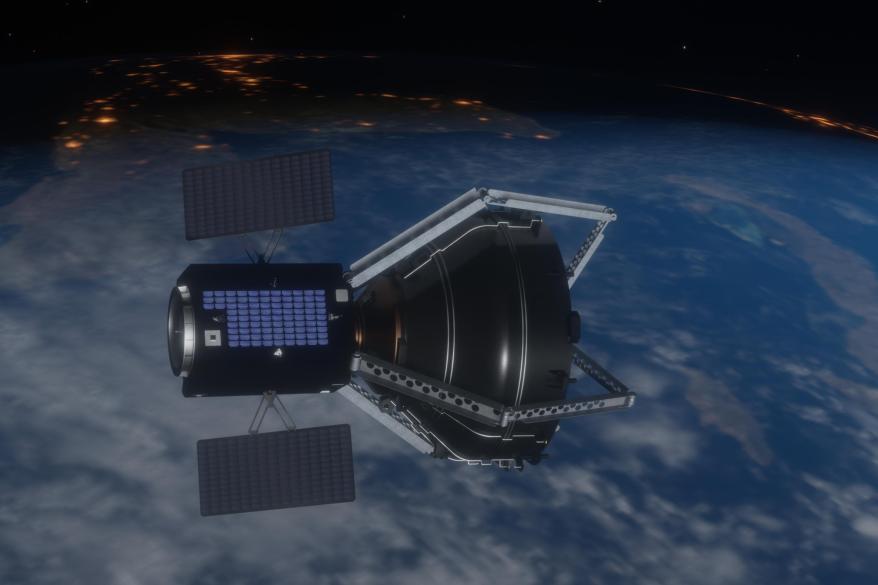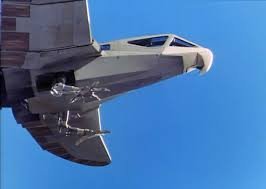I totally agree that it makes sense to use a hangar or docking facility and would do that when building a ship myself. But I am leery of stating "that's the rule" to someone when it doesn't actually state that and the example contradicts it.I would say heavily implied, cemented by the explicit language in the Docking Facility.
The 10% extra for Docking Space means it has centimeters clearance, not more. It would be difficult to pack any other craft in there.
You are using an out of date browser. It may not display this or other websites correctly.
You should upgrade or use an alternative browser.
You should upgrade or use an alternative browser.
Question: Nishemani Corsair
- Thread starter Subzero001
- Start date
Condottiere
Emperor Mongoose
Subzero001
Banded Mongoose
Condottiere: the pic looks more like the "jump Boat"
Condottiere
Emperor Mongoose
I was thinking spider.
It's pretty easy to say docking clamp, where you don't have to worry about extra tonnage nor hull configuration, being external.
I think that the two advantages swallowing it would be if you had a chop shop onboard, and if you needed to hide the evidence.
It's pretty easy to say docking clamp, where you don't have to worry about extra tonnage nor hull configuration, being external.
I think that the two advantages swallowing it would be if you had a chop shop onboard, and if you needed to hide the evidence.
GypsyComet
Emperor Mongoose
Not really, though you can see it from there. 3x around a classic Scout is just a bounding box around the Scout, with each of its dimensions. That still won't handle a Needle, or a Sphere.At best, docking space has maximum tonnage and likely hull configuration.
Safe choice would be full hangar at two hundred percent.
Space station docking facility implies that at three hundred percent, hull configuration isn't an issue.
And of course, a bay for an ideal sphere won't take a Tigress.
The minimum walk-around bay for other configurations will be a different ratio, but to be completely configuration universal is going to need a lot more than 3x.
Condottiere
Emperor Mongoose
1. How to thread the needle on this one?
2. It's a reason I insist that the Confederation Navy is keen on homogenization of spacecraft and spacecraft components.
3. If you think hangar space is an issue, consider launch tubes.
4. Anyway, consider that a collection of connected hangars are larger than the sum of their parts.
5. The larger space allows spacecraft of various sizes and configurations to be manipulated around like a jigsaw puzzle until the bits sticking out find free space.
6. Ignoring hatches and elevators.
7. One reason we deliberately ignore the issue is because space is at a premium onboard our spacecraft.
8. Optionally, if we have fuel/cargo bays, we can also have hangar/hangar bays, and shift the bulkheads, or walls, around, to fit in odd shaped spacecraft.
9. If there's some reason you need bulkheads to wall off individual spacecraft.
2. It's a reason I insist that the Confederation Navy is keen on homogenization of spacecraft and spacecraft components.
3. If you think hangar space is an issue, consider launch tubes.
4. Anyway, consider that a collection of connected hangars are larger than the sum of their parts.
5. The larger space allows spacecraft of various sizes and configurations to be manipulated around like a jigsaw puzzle until the bits sticking out find free space.
6. Ignoring hatches and elevators.
7. One reason we deliberately ignore the issue is because space is at a premium onboard our spacecraft.
8. Optionally, if we have fuel/cargo bays, we can also have hangar/hangar bays, and shift the bulkheads, or walls, around, to fit in odd shaped spacecraft.
9. If there's some reason you need bulkheads to wall off individual spacecraft.
Condottiere
Emperor Mongoose
At some point, you just have to say "this is good enough for game play". The same reason running out of fuel for your powerplant is practically impossible. The same reason wandering vagabonds can get multimillion credit loans to buy a ship. I mean, if you really want to, you can figure out the dimensions of a 200 dton sphere, a 200dton needle, and a 200dton dispersed structure, add your 10% or whatever you feel is right to the distance of each dimension, and then figure out the total volume. Sounds like something the vast majority of players are gonna go "nope" on to me. A simple "wrong" answer is better for gameplay than an complex more accurate answer, imho.
Condottiere
Emperor Mongoose
Speaking of the sphere, at one hundred ten percent, you're likely have a hemispheric bulge at the bottom of the hull, being two large hangar doors, since if you tried to square the circle, you're going to have a lot of wasted space.
A more realistic design would be a ship that extends claws or something similar to a jump net to externally "capture" the other ship. That way a ship would not need to try and stuff something else inside of itself.
And, i think, such a design would run afoul of the docking bay rules, which would require additional tonnage as wastage/ access space (and it wouldn't be allowed to follow the conformal docking Bay rule).
And, i think, such a design would run afoul of the docking bay rules, which would require additional tonnage as wastage/ access space (and it wouldn't be allowed to follow the conformal docking Bay rule).
AndrewW
Emperor Mongoose
A more realistic design would be a ship that extends claws or something similar to a jump net to externally "capture" the other ship. That way a ship would not need to try and stuff something else inside of itself.
Attachments
Condottiere
Emperor Mongoose
Used by naval patrol ships, scavengers and pirates to board spacecraft, forced linkage apparatuses are close-range grappling devices that allow attempts at forced docking. After a successful grapple, the ship can be boarded or towed into port at leisure. Grappling cables can be used to restrain a fleeing ship or stabilise a tumbling ship. The ship attempting forced linkage must have a Thrust advantage of at least one over the opposing ship and may not be less than half the tonnage of the target ship.


That seems like the fighter from buck Roger's 2nd (or 3rd?) Season with the character who was a bird-man.
But I was thinking more like a modern transport ship that has an open deck where they can float or place an outsized cargo on it, then increase their buoyancy to lift it out of water and it works much like a barge then.
In space you'd just need to extend your jump field around your cargo some way to effect the same thing.
But I was thinking more like a modern transport ship that has an open deck where they can float or place an outsized cargo on it, then increase their buoyancy to lift it out of water and it works much like a barge then.
In space you'd just need to extend your jump field around your cargo some way to effect the same thing.
AndrewW
Emperor Mongoose
Second season (there wasn't a third). Yup, was Hawks ship, he did use it to grapple Buck's ship.That seems like the fighter from buck Roger's 2nd (or 3rd?) Season with the character who was a bird-man.
In space you'd just need to extend your jump field around your cargo some way to effect the same thing.
Like putting a jump net around it.
The jump net has never been a good idea, imo. To make it work would basically be (using the old jump grid concept) a very expensive jump grid wrapped in cables. And that would open up other questions about it being embedded in a hull, etc.Second season (there wasn't a third). Yup, was Hawks ship, he did use it to grapple Buck's ship.
Like putting a jump net around it.
I think it's less hard wavium to have emitters or a field of some such, and expand that when your object is in close/physical contact. Installing the specialized emitters and extending a field is a matter of energy, and the physical contact puts realistic limitations on the item being carried. We do that today with electrical fields- not the carry through jump space of course.
Thanks for the season reference. I just remember the movie and the beginning of season 1 being ok (rollerskaters in the 25th century!), and season two getting more silly. Don't recall which one had the space vampire in it. But Wilma Deering made it more watchable.
Condottiere
Emperor Mongoose
The jump net is an artifact of it's time; consider that the jump shuttle is going to have an issue with a non gridded passenger.
The field effect appears to have been resolved with the jump bubble concept, though it does appear to be somewhat Swiss cheesey.
The field effect appears to have been resolved with the jump bubble concept, though it does appear to be somewhat Swiss cheesey.
GypsyComet
Emperor Mongoose
This was fixed so long ago it would be surprising if Mongoose doesn't carry that fix forward. Especially given the presence of drop tanks. The volume of the ship changes for the purpose of calculating performance of the M-Drive and J-Drive. External grapples/jump net/etc take up some nominal volume in the base ship and enable the temporary attachment of more volume. How much is limited by the grapples and the drives, so a ship designed to grapple must be designed with excess drive capacity.A more realistic design would be a ship that extends claws or something similar to a jump net to externally "capture" the other ship. That way a ship would not need to try and stuff something else inside of itself.
And, i think, such a design would run afoul of the docking bay rules, which would require additional tonnage as wastage/ access space (and it wouldn't be allowed to follow the conformal docking Bay rule).
The primary reason to not use this approach is the granularity of the Letter Drives.
Last edited:


